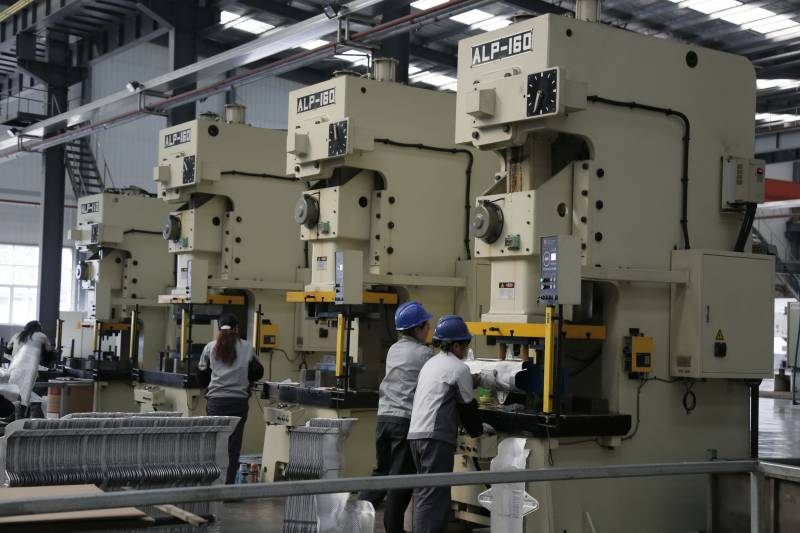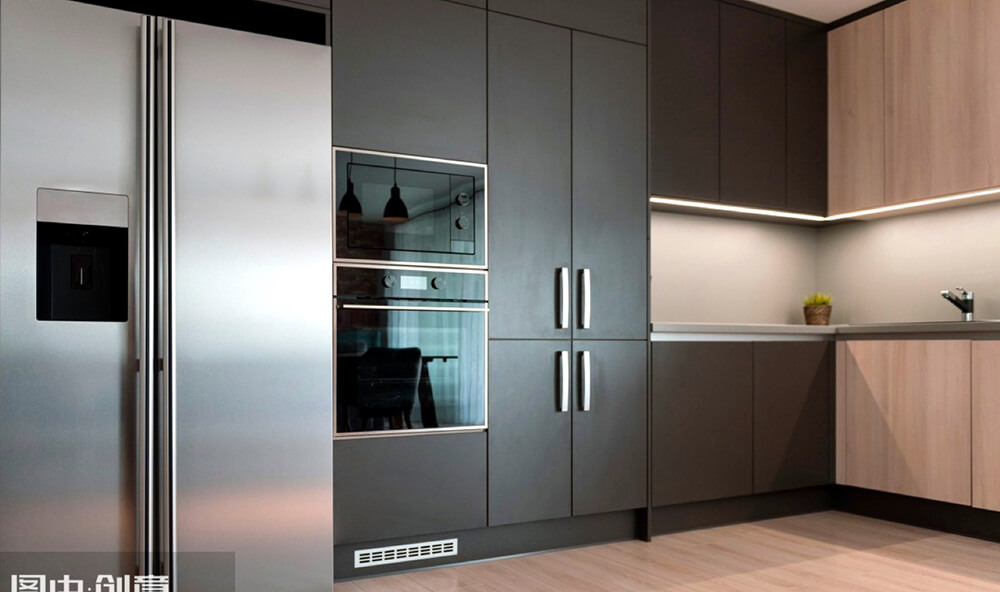The mechanical press is a fundamental machine in manufacturing and production industries, transforming raw materials into finished products through precise force and motion. From automotive to electronics, the mechanical press plays a vital role in shaping, cutting, and forming metal and other materials into specific designs and products. With various designs tailored to meet unique production requirements, the mechanical press has cemented itself as a cornerstone in modern industrial processes.
History of the Mechanical Press
Mechanical presses have their origins in the early days of metalworking, evolving from simple hand-operated tools into advanced, high-powered machines. The invention of the press dates back to ancient times when manual force was used to shape metals, with more sophisticated designs emerging during the Industrial Revolution. In the 19th century, mechanical presses powered by steam and, later, electricity became standard in factories, increasing productivity and paving the way for mass production. Today’s mechanical presses are designed with precision and power, incorporating modern technology to achieve higher efficiency and accuracy.
Understanding How Mechanical Presses Work
Mechanical presses use a powerful motor that transfers rotational energy to a ram or plunger, applying significant force onto materials to alter their shape or form. Here are some key components involved:
Frame: Provides structural support, ensuring the press withstands applied forces.
Ram: The moving component that contacts and applies force to the workpiece.
Flywheel: Stores rotational energy, helping the press maintain a consistent speed.
Clutch and Brake Systems: Engage and stop the ram, ensuring controlled operations.
In operation, energy is transferred from the motor to the flywheel, which stores rotational energy. This energy is then released to move the ram, which applies force to the material placed below. This process is highly efficient for tasks requiring repetitive force, making it ideal for high-volume production.

Types of Mechanical Presses
Mechanical presses come in various designs, each suited for specific applications and force requirements. Here are some of the primary types:
Crank Press
A crank press utilizes a crank mechanism to convert rotary motion into linear motion, providing a smooth, controlled force. Known for its reliability, this type is widely used in stamping, forming, and bending applications, particularly when consistency and speed are needed.
Knuckle Joint Press
With a unique knuckle joint mechanism, this press type is ideal for applications requiring a high force over a short distance. Commonly used in embossing and coining, the knuckle joint press is favored in industries where precision is essential.
Toggle Press
Toggle presses use a toggle mechanism to amplify force. They are versatile and often used in smaller applications where adjustable force and accurate positioning are required. This type is favored in precision assembly tasks.
Cam Press
This type uses a cam mechanism to provide intermittent motion, ideal for operations requiring precise control over movement. Cam presses are commonly used in applications where parts need specific shaping or bending.
Screw Press
Screw presses utilize a large screw mechanism to convert rotational energy into linear force. This press is highly versatile, offering applications in metal forming and other tasks requiring fine force adjustments.

Key Applications of Mechanical Presses
Mechanical presses are indispensable in manufacturing, with applications extending across various sectors:
Metal Stamping and Forming: Shaping metal sheets into specific designs, widely used in the automotive and electronics industries.
Embossing and Coining: Creating raised or indented patterns on metal surfaces for items like coins, medallions, and decorative items.
Blanking and Punching: Cutting materials into precise shapes or holes, frequently used in high-volume production.
Assembly and Bending Applications: Used to bend and assemble parts with high accuracy, essential for constructing machinery and complex assemblies.
Mechanical Press vs. Hydraulic Press
Choosing between mechanical and hydraulic presses often comes down to the nature of the application:
Mechanical Press: Ideal for high-speed, repetitive tasks, where consistent force application is crucial. Best suited for metal forming, stamping, and punching.
Hydraulic Press: Offers variable force and speed, making it ideal for tasks requiring high precision and flexibility, like deep drawing and extrusion.
Mechanical presses generally offer faster operation, making them better suited for high-volume production, whereas hydraulic presses are ideal for tasks that demand variable force.
Benefits of Mechanical Presses in Modern Manufacturing
Mechanical presses bring a host of advantages, especially in high-volume manufacturing. They offer exceptional precision, high-speed operation, and cost-effectiveness, making them ideal for industries like automotive, aerospace, and consumer electronics. Mechanical presses are also known for their durability and low maintenance needs, ensuring long-term productivity with minimal downtime.
Selecting the Right Mechanical Press for Your Needs
Selecting a mechanical press depends on several factors, including:
Production Speed and Volume: Mechanical presses are optimal for high-speed, repetitive tasks.
Force Requirements: Choose a press with the appropriate tonnage for the specific material and application.
Material and Part Size: Ensure the press size aligns with your production requirements to avoid excessive energy use or part damage.
Understanding your production requirements can help in selecting a press that enhances efficiency and reduces operational costs.
Safety Considerations for Mechanical Press Operation
Operating a mechanical press comes with inherent risks, making safety protocols essential. Modern mechanical presses are equipped with safety features such as emergency stop buttons, dual-hand controls, and protective guarding. Operators must receive proper training, follow established protocols, and use personal protective equipment (PPE) to minimize the risk of injury.
Maintenance and Troubleshooting for Mechanical Presses
Regular maintenance ensures a mechanical press operates smoothly and efficiently. Common maintenance tasks include lubricating moving parts, inspecting and replacing worn components, and ensuring that control systems are functioning correctly. When issues arise, troubleshooting common problems like excessive noise, irregular motion, or inconsistent force application can prevent minor problems from escalating.
Innovations in Mechanical Press Technology
With advancements in automation and control systems, modern mechanical presses are becoming smarter and more efficient. Newer models integrate with digital monitoring systems that track machine performance in real-time, providing data insights that help operators optimize operations. Enhanced safety mechanisms and eco-friendly designs are also gaining popularity, reflecting a shift towards sustainability.

Environmental Impact of Mechanical Presses
Mechanical presses can have a notable energy footprint, but many manufacturers are adopting energy-efficient models and practices. Some presses now incorporate regenerative braking systems that convert kinetic energy back into power, reducing overall energy consumption. Improved efficiency and eco-conscious designs are helping to make mechanical presses more sustainable in industrial production.
Future of Mechanical Press Technology
As automation and digitalization advance, mechanical presses are expected to become even more integrated into smart manufacturing systems. Robotics, AI-driven monitoring, and adaptive controls are likely to enhance press functionality, improve efficiency, and increase safety. These innovations will enable manufacturers to meet growing demand while reducing environmental impact.
Conclusion
Mechanical presses remain a cornerstone of the manufacturing industry, enabling efficient, high-volume production across a wide range of applications. From their origins in manual metalworking to today’s technologically advanced systems, mechanical presses have evolved significantly. With advancements in automation, safety, and sustainability, mechanical presses are well-positioned to continue shaping the future of manufacturing.
FAQs
What is the lifespan of a mechanical press?












